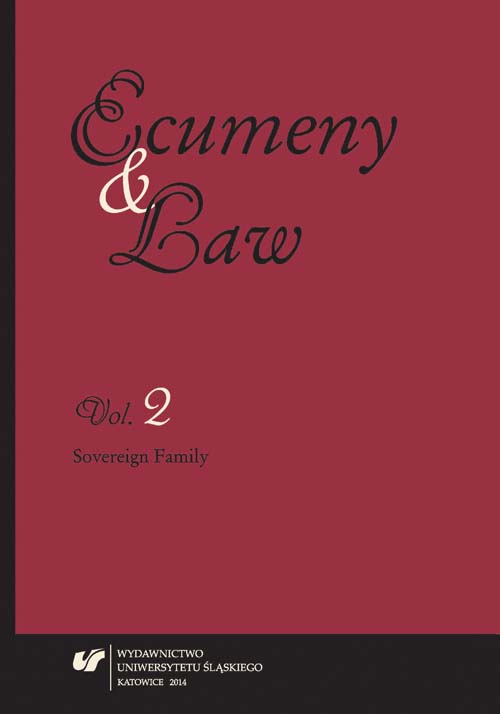The Christian Family in the Light of the Nomocanonical Legislation Printed in Romanian Language in the 17th Century
The Christian Family in the Light of the Nomocanonical Legislation Printed in Romanian Language in the 17th Century
Author(s): Bogdan Chiriluţă, Cătălina MititeluSubject(s): Christian Theology and Religion
Published by: Wydawnictwo Uniwersytetu Śląskiego
Keywords: the Nomocanon; canonical legislation; marriage; family
Summary/Abstract: In the Nomocanons of Govora (1640), Iassy (1646) and Târgovişte (1652), that is in the three nomocanons written and printed in the Romanian language in the 17th century — which are, in fact, representative for the apogee of the juridical-canonical medieval culture from the Romanian countries — the juridical-canonical institution of the Family and, consequently, the Marriage — the one which gives life to it — have received from their authors a special attention. A close examination of the three Byzantine nomocanons texts — even a succinct one — made obvious the fact that for the Romanian society of the respective epoch (the fifth and sixth decades of the 17th century) the Family was one of its juridical-canonical institution, where from we can also notice the evident preoccupation of the then theologians, canonists, and jurists to put in hand of their contemporaries not only a canonical or nomocanonical guide concerning the rights and the obligations of their members, but a theological exposition with regard to the teaching of the Eastern Church on the Family and its constituent element, the matrimony, with all the conditions and impediments which have been provided by both the canonical Legislation of the Eastern Church from the first millennium and by the norms of the Roman and the Byzantine law.
Journal: Ecumeny and Law
- Issue Year: 2014
- Issue No: 2
- Page Range: 247-267
- Page Count: 21

